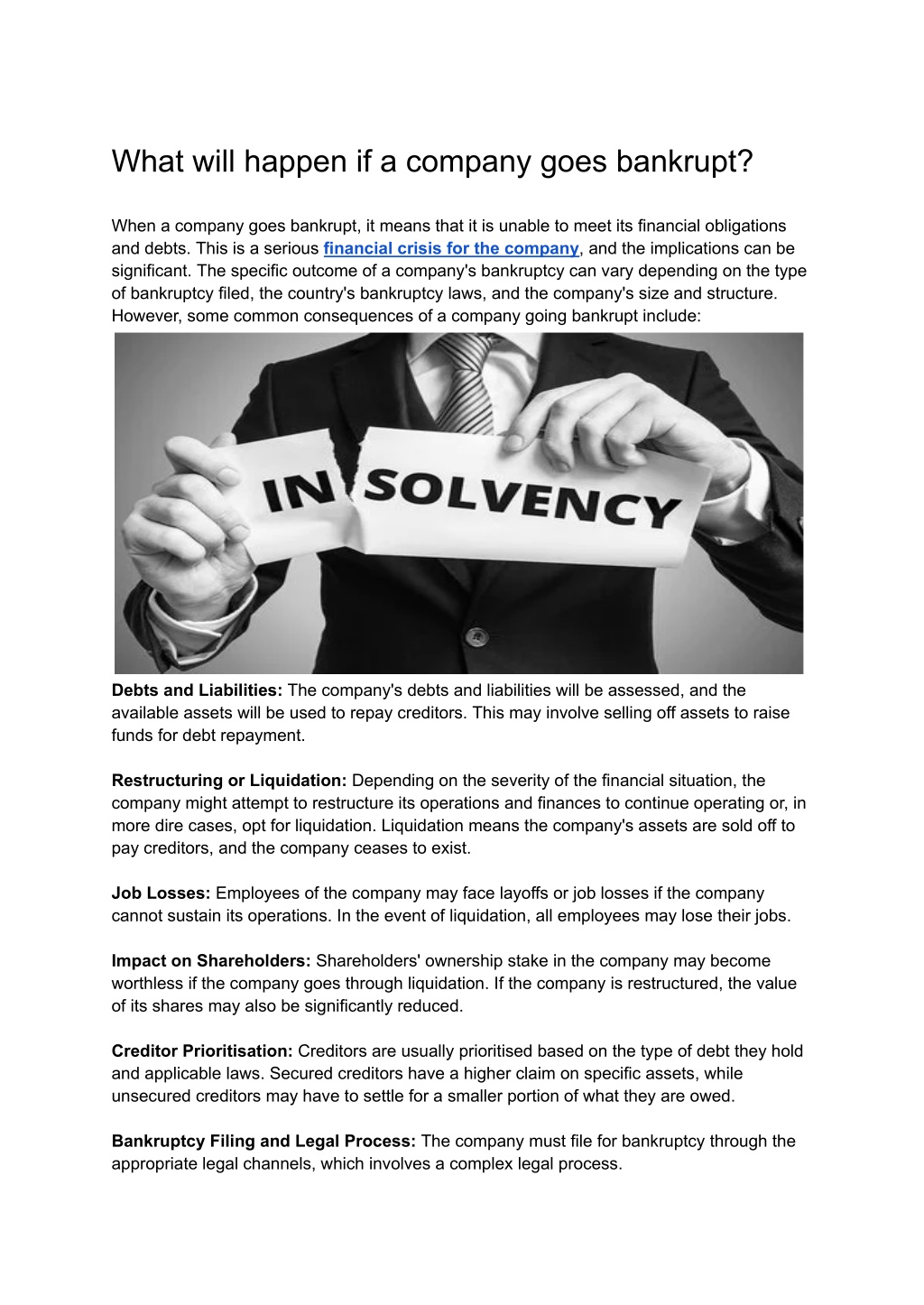In-Depth Guide to Company Administration: Implications When a Company Goes into Liquidation
In-Depth Guide to Company Administration: Implications When a Company Goes into Liquidation
Blog Article
The Refine and Consequences of a Business Entering Management
As a company faces economic distress, the decision to go into management marks a critical juncture that can have far-ranging effects for all entailed events. The procedure of entering administration is complex, including a series of actions that intend to browse the firm towards potential recuperation or, in some situations, liquidation.
Introduction of Company Administration Refine
In the world of corporate restructuring, a necessary initial step is acquiring a comprehensive understanding of the complex firm management process. Company administration refers to the formal bankruptcy procedure that intends to save a financially distressed firm or achieve a far better outcome for the firm's financial institutions than would certainly be possible in a liquidation situation. This procedure entails the appointment of a manager, that takes control of the firm from its directors to evaluate the economic scenario and establish the most effective strategy.
During administration, the company is provided defense from legal activity by its lenders, offering a moratorium period to create a restructuring strategy. The manager works with the company's management, lenders, and other stakeholders to create an approach that might entail selling the organization as a going concern, reaching a business volunteer plan (CVA) with financial institutions, or eventually positioning the business right into liquidation if rescue attempts prove futile. The main objective of firm management is to optimize the go back to creditors while either returning the company to solvency or shutting it down in an organized way.

Functions and Duties of Manager
Playing a pivotal role in looking after the firm's decision-making procedures and economic affairs, the administrator thinks substantial duties during the business restructuring procedure. The primary obligation of the administrator is to act in the very best passions of the company's financial institutions, intending to accomplish the most desirable end result possible - into administration. This involves performing a complete evaluation of the company's economic circumstance, developing a restructuring strategy, and executing approaches to maximize go back to creditors
In addition, the manager is responsible for liaising with different stakeholders, consisting of employees, providers, and regulative bodies, to make certain openness and compliance throughout the management procedure. They need to likewise connect successfully with shareholders, providing normal updates on the company's development and seeking their input when necessary.
Furthermore, the manager plays an essential role in managing the everyday procedures of the company, making vital decisions to keep continuity and protect value. This includes examining the practicality of different restructuring choices, working out with creditors, and eventually assisting the company in the direction of an effective leave from management.
Effect On Firm Stakeholders
Thinking a critical placement in looking after the firm's financial affairs and decision-making processes, the administrator's actions throughout the corporate restructuring process have a direct effect on different firm stakeholders. Clients might experience interruptions in solutions or product schedule throughout the this link administration procedure, impacting their trust and commitment in the direction of the firm. In addition, the neighborhood where the firm runs can be influenced by possible job losses or changes in the business's operations, influencing regional economic situations.
Legal Effects and Responsibilities
During the process of business management, careful factor to consider of the lawful implications and obligations is extremely important to make certain compliance and shield the rate of interests of all stakeholders entailed. When a firm gets in administration, it triggers a set of lawful needs that must be adhered to.
In addition, legal implications occur worrying the therapy of staff members. The administrator needs to adhere to work legislations concerning redundancies, staff member legal rights, and commitments to give essential info to staff member reps. Failure to adhere to these legal requirements can cause legal action versus the business or its managers.
Moreover, the company entering management might have legal commitments with numerous parties, including property owners, clients, and distributors. In essence, understanding and satisfying legal responsibilities are important facets of browsing a business through the administration procedure. what happens this website to employees when a company goes into liquidation.
Techniques for Company Recuperation or Liquidation
In taking into consideration the future direction of a business in administration, strategic preparation for either recovery or liquidation is vital to chart a viable path forward. When going for company healing, key techniques may include carrying out a complete analysis of business operations to identify inefficiencies, renegotiating contracts or leases to boost capital, and implementing cost-cutting actions to boost success. Additionally, seeking brand-new investment or funding options, expanding profits streams, and concentrating on core expertises can all add to an effective recuperation strategy.

Conclusion
In verdict, the procedure of a company getting in administration entails the visit of an administrator, who tackles the obligations of taking care of the firm's events. This procedure can have considerable consequences for numerous stakeholders, including workers, financial institutions, and shareholders. It is necessary for firms to carefully consider their choices and techniques for either recovering from economic problems or waging liquidation in order to reduce potential legal ramifications and obligations.
Business management refers to the official insolvency treatment that aims to rescue a financially troubled firm or achieve a far better outcome for the business's lenders than would certainly be possible in a liquidation scenario. The administrator works with the firm's monitoring, lenders, and various other stakeholders to create a technique that might include selling the company as a going problem, getting to a company volunteer plan (CVA) with lenders, or ultimately positioning the business into liquidation Discover More Here if rescue efforts prove useless. The key goal of firm management is to maximize the return to financial institutions while either returning the company to solvency or shutting it down in an orderly fashion.
Presuming a crucial placement in looking after the firm's financial affairs and decision-making processes, the manager's activities throughout the corporate restructuring process have a straight effect on numerous company stakeholders.In verdict, the procedure of a business going into management involves the visit of a manager, who takes on the duties of taking care of the firm's events.
Report this page